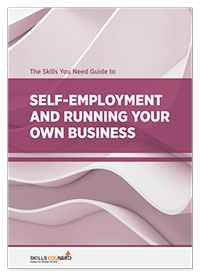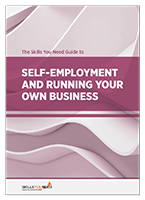Pricing and Charging for Freelancers
See also: Managing Client RelationshipsPricing and charging is a tricky area for freelancers.
Overprice your work, and you will price yourself out of the market. Undercharge, and you will not be able to afford to live, never mind carry on freelancing.
Pricing also sends an important signal to your clients about your value, or worth: too cheap, and they may not value your contribution, or may take you for granted.
It is therefore important to understand the basis for correct charging. This underpins your whole business model, and ensures your continued survival in self-employment.
This page is designed to help you understand how to work out what to charge, based on what you want to earn, what you need to earn, and what the market will bear. It also covers the thorny issue of hourly or piece work.
Deciding What to Charge
There are two things to consider here:
1. What You Want or Need to Earn
Your first step in thinking about charging is to work out what you need to earn, and also what you want to earn. The first of these is the amount of money that you need to bring in each month, just to survive (that is, to pay the rent or mortgage, meet your monthly bills, and buy food and other essentials). The second is what you would actually like to earn each month to give you enough for luxuries as well as essentials.
TOP TIP!
When considering how much you need and want to earn, it can be helpful to multiply this up to the full year, and include one-off spends like car tax, holidays, and insurance. It is surprising how much those one-offs add up.
You also need to remember about income tax. Once you are earning over a certain amount, you will be paying tax on your income, so remember to include that in what you ‘need’ to earn. There are various useful tax calculators available to help you work out how much tax you will pay on a particular income.
Once you have an idea of what you would like to earn, identify your ‘normal’ working hours and days. Work out how many hours (roughly) and days you want and/or are able to work each week or month. Also consider how much holiday time you will want. Again, it can be helpful to look at this on a yearly basis, rather than monthly.
The final step is to put the two together. By looking at the average number of hours per year you will be working, and the total amount you need to earn, you can see what you need to charge per working hour.
Remember this is the minimum that you need to charge!
There will be days when you do not get much done, because you have to take the car to the garage, or you or your child are sick, or you are just feeling unproductive and cannot work. Build in an contingency to give you a cushion, so that if you have a bad day, or want to take an extra day off, you can do so.
2. What the market will bear
Once you know how much you would like to charge, you can then move on to the next stage, which is to work out whether that is possible. In other words, if you charge that for your services, will you a) be credible, and b) get any work?
There are broadly two things to consider here.
- First, what is the going rate for what you are going to do?
- Second, what will the market actually bear, or what is the maximum that you could charge, once you are really good? This might be the same as the going rate, or it might be rather more.
There are a number of ways that you can establish the going rate for your work. You can, for example, look at what other people are charging on freelance sites.
A race to the bottom?
When looking at freelance sites, you need to be aware that people from countries with a much lower cost of living may be able to charge significantly less than you can afford to charge.
Freelance sites can therefore feel a bit like a ‘race to the bottom’ in price (and quality) terms. You need to think about the quality of the product you are offering as well as the price. There is a balance between the two: lower price = lower quality.
It is better to get a reputation for a really good quality product at a higher price than join the ‘race to the bottom’.
You may also be able to find ‘union rates’ for the work you propose to do. The UK’s National Union of Journalists, for example, occasionally publishes lists of average freelance rates for particular types of writing work. This means that you can keep abreast of what other people are charging.
You can also use industry forums on sites like LinkedIn to ask about rates. You do, of course, have to be aware that not everyone will tell the truth on sites like that, but it should give you a reasonable guide.
Starting Out: A Lower Rate?
When you first start working freelance, you may find that you need to drop your prices a little to get work. Without a reputation to rely on, it is harder to find jobs, and employers are reluctant to pay full prices. Be prepared to negotiate prices a little, especially in the early days.
Once you have established a reputation for good quality work, delivered on time, however, you can charge more. Your clients will then expect more, of course, in terms of quality, and you will have to maintain that!
One of the best ways to test your rates is to suggest them to clients. If they come back immediately accepting the rate, you have probably under-priced the work, and you will know for next time. If they hesitate, and ask if you can do it any more cheaply, you may have over-priced it, and you might need to negotiate.
Hourly vs. Piece Work
Many new freelancers struggle with the question of hourly or piece work.
It does not really matter which you choose to use as a preference. It is, however, important to be able to ‘translate’ reasonably comfortably between the two, as some clients will have a genuine preference for one or the other.
You therefore need to know how long it takes you to do a particular piece of work, for example, to write a blog post of 500 or 1000 words, or to edit 1000 words. That way, you can give your clients an idea of how many hours’ work the job will take, and/or agree a piece rate if they are more comfortable with that.
You probably won’t get the conversion rate exactly right at first. Don’t worry, though, because jobs will even out: some will be quicker than you expect, and some slower.
Administration and fees
It is also worth remembering that your costs need to include an element for admin and fees.
Your bank may charge to receive payments, freelance sites will charge you a fee, and you will also have to spend time emailing clients, writing invoices, and keeping records. If you charge an hourly rate, you can just add in the admin time for the relevant client. If you charge for a piece of work as a whole, however, your fee will need to include the admin costs.
Further Reading from Skills You Need
The Skills You Need Guide to Self-Employment and
Running Your Own Business
If you are thinking about running your own business, or already do so, but feel that you need some guidance, then this eBook is for you. It takes you through self-employment in easy steps, helping you to ensure that your business has more chance of success.
The Skills You Need Guide to Self-Employment and Running Your Own Business is the guide no new or aspiring entrepreneur can afford to be without!
Based on our popular self-employment and entrepreneurship content.
A final thought
It is important to remember that your prices are not set in stone.
You can test out different prices with different clients, and possibly negotiate rates with good clients, or those offering more work. You can also increase your rates if you find that you are not earning enough. Flexibility—and careful tracking—are important tools for freelancers.


